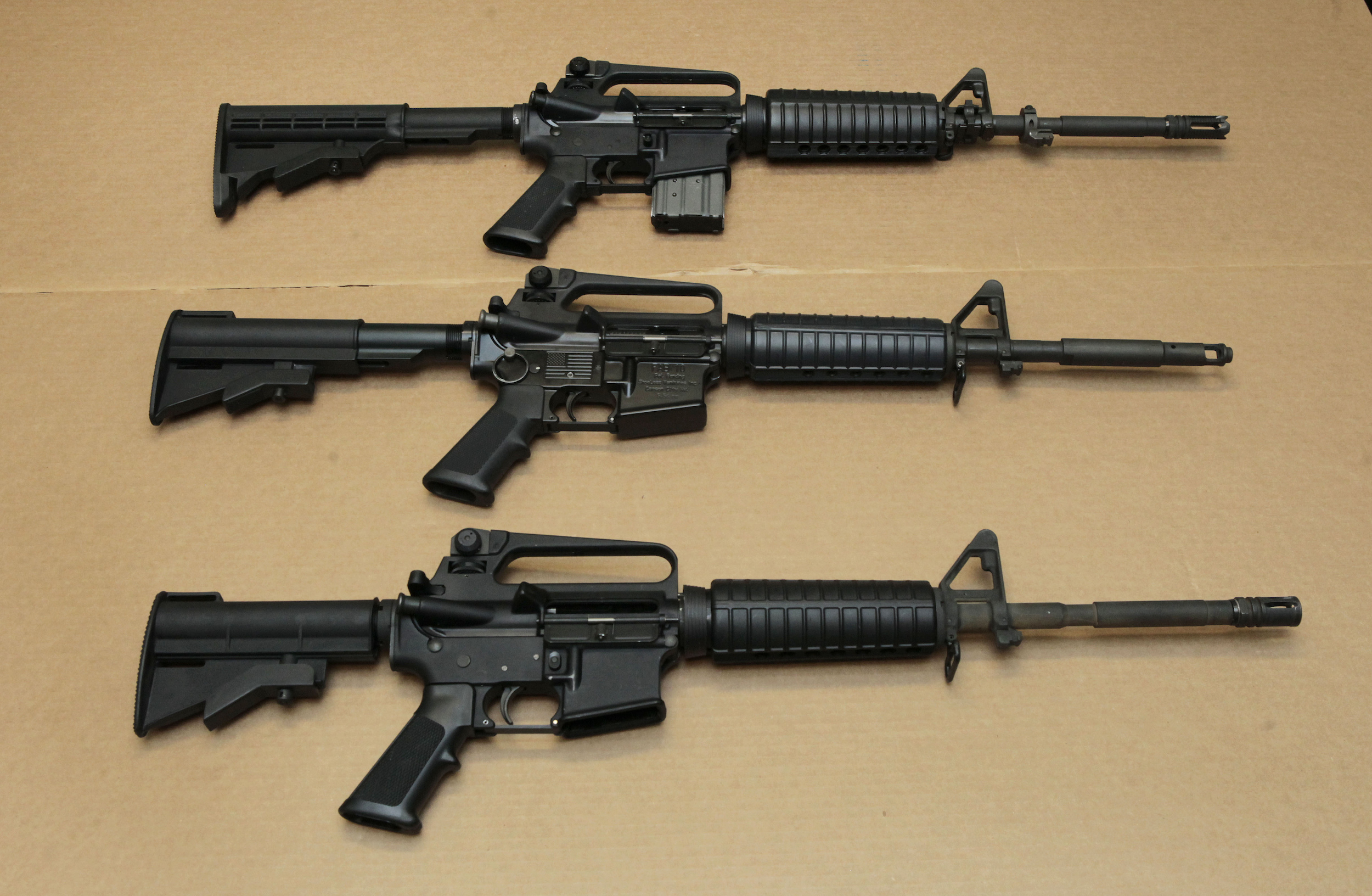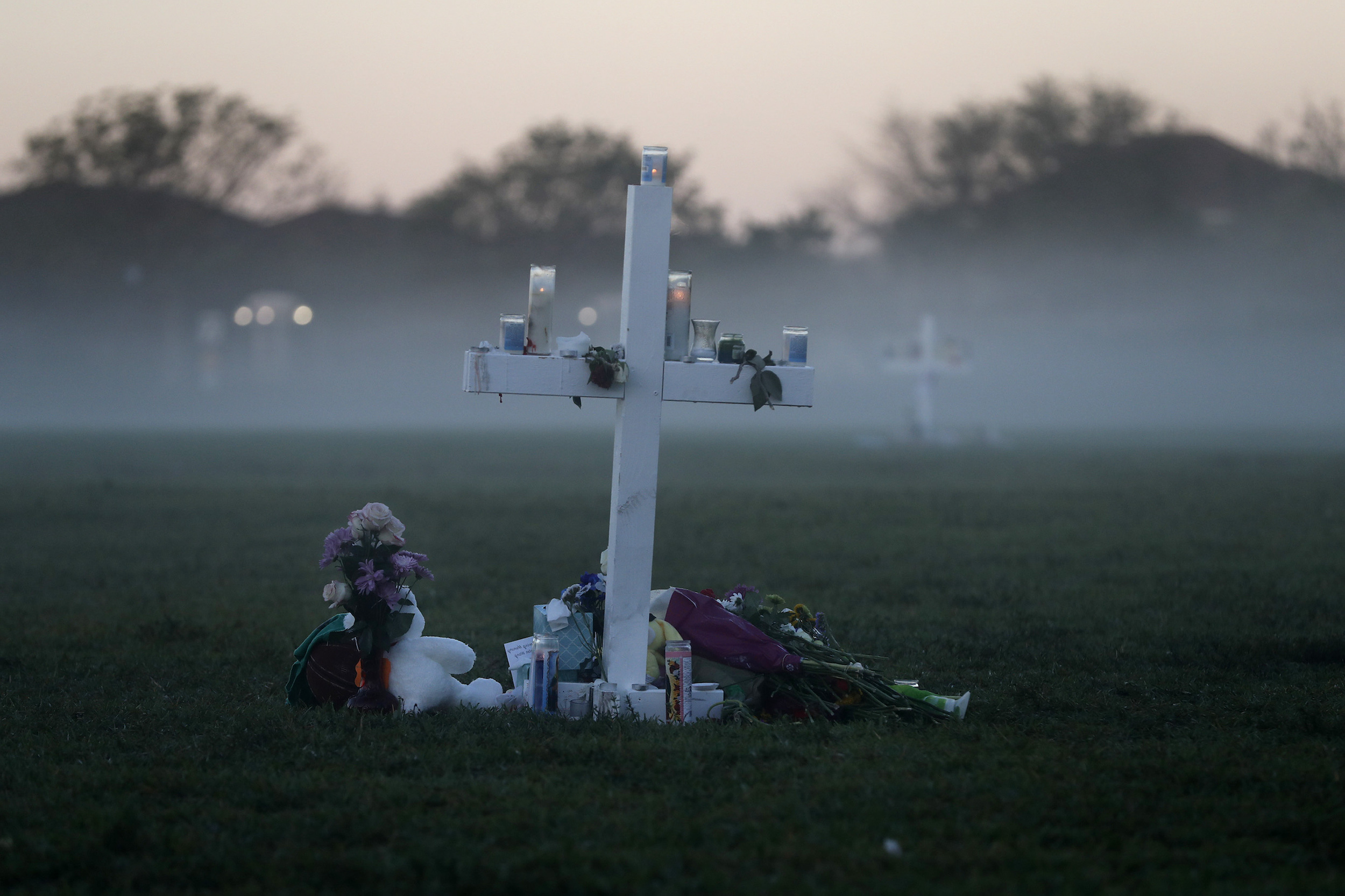OfTheCross
Veteran

The history of the AR-15 and how it became a symbol of American gun culture - Poynter
The weapon’s initials stands for 'Armalite Rifle,' but the name has turned into an umbrella term for this type of semi-automatic weapon.
How the AR-15 became “America’s Rifle”
From the beginning, the AR-15 was designed to be easy to use. One reason it was developed as the M-16 for the U.S. military is that anyone could pick up the rifle and shoot it with ease, even if they had never used a firearm before.The rifle is lightweight, weighing about 6 pounds. In a military context, this made it easier for soldiers to carry the gun around for long periods of time. The AR-15, which today sells for between $800 and $2,000, also has an adjustable stock to fit the ergonomics of the shooter, and there’s little recoil after each firing. In most places in the U.S., you can buy an AR-15 when you turn 18.
Many soldiers who returned home after the Vietnam War wanted to own an AR-15 because it was similar to the M-16 they had used overseas. The AR-15 was designed to look like its military counterpart, rather than a hunting rifle, for example, said Grant Reeher, a political science professor at Syracuse University who is writing a book on the culture and politics of firearms in the U.S.
The AR-15 has been described as “the LEGO of guns,” because it is so customizable. You can modify the rifle with accessories or assemble the different parts yourself, making it highly appealing to gun enthusiasts, especially those who like to tinker with firearms.
These features made the AR-15 attractive from the start, earning it the title of “America’s Rifle” from the National Rifle Association. But the rifle’s popularity really took off in the 2000s, after the federal ban on semi-automatic assault weapons expired in 2004.
The federal ban stemmed from a 1994 law, which received bipartisan support in Congress and was signed by President Bill Clinton. It banned the “manufacture, transfer, and possession” of about 118 different firearm models and all magazines with capacities larger than 10 rounds. However, the law also included a grandfather clause — firearms or large-capacity magazines made prior to 1994 were still legal.
Defining what is and isn’t an assault weapon is difficult. The 1994 law defined an assault weapon by the number of military-type features the firearm had, including flash hiders, folding rifle stocks and threaded barrels for attaching silencers. If a firearm had two or more military-type features, then it was banned under this law.
While the assault weapons ban did not completely outlaw all AR-15-style rifles, it did impose a social stigma at the time that discouraged sales of the gun, said Ryan Busse, senior policy advisor for Giffords, a gun control advocacy group.
When the ban sunsetted in 2004, under President George W. Bush, the U.S. had undergone a major cultural shift. In the wake of 9/11, patriotic sentiment surged, and support for the military spiked as the U.S. launched wars in Iraq and Afghanistan.
Around the same time, Call of Duty, a first-person shooter video game, was first released, followed by many others of that genre. Over the past two decades, these games that allow people to envision what it could be like to use the weapons themselves have helped bolster the rifle’s popularity, said Reeher, the professor at Syracuse University.
“You’ve got this whole new set of people that are playing these games and really getting into these rifles. And then they decide, you know what, I want the real thing,” Reeher said.
In 2005, the Protection of Lawful Commerce Arms Act was passed, shielding the gun industry from civil action “resulting from the criminal or unlawful misuse” of a firearm or ammunition.
This law “took the lid off” of marketing for the AR-15, leading to many more companies manufacturing or selling the rifle, said Busse, who worked in the firearms industry for more than two decades.
“By the time (Barack) Obama was leading in the polls in 2007, the AR-15 was starting to become the poster child, both of industry growth, but also what we now see, which is right-wing politics wrapped in and around the firearms industry and firearms ownership,” Busse said.
The prevalence of AR-15s in mass shootings

An early morning fog rises where 17 memorial crosses were placed for the 17 students and faculty killed at Marjory Stoneman Douglas High School, in Parkland, Fla., Saturday, Feb. 17, 2018. (AP Photo/Gerald Herbert)
The AR-15 has become inextricably linked with mass shootings in the U.S. A 2020 study by professors at the University of Alabama and Worcester State University found that semi-automatic rifles are being increasingly used in mass shootings.
From 1966 to 2009, about one-third of mass shooters used a semi-automatic rifle, the study found. Over the next decade, that proportion rose to 56%. Perpetrators with semi-automatic rifles killed more people on average than those that used other firearms.
The gunman in the Las Vegas shooting used a bump stock to make his semi-automatic rifles fire more rapidly — killing 58 people and injuring 800 within 11 minutes, police said. After that event, the Bureau of Alcohol, Tobacco, Firearms & Explosives amended its regulations to prohibit bump stocks.
Although AR-15s are often used in mass shootings, they are responsible for a fraction of the overall gun-related deaths that occur annually in the U.S.
Suicides accounted for more than half of the 45,222 gun-related deaths in 2020, and homicides made up 43%, according to the Pew Research Center.
Of the 13,650 gun-related homicides in 2020, nearly 60% of them involved a handgun, according to FBI data. By comparison, only 3% of these deaths involved a rifle and 1% involved a shotgun. (The remaining 36% of homicides were classified as “type not stated.”)
How AR-15s have been regulated
Historically, handguns and long guns have been regulated differently. That’s because handguns were associated more with crime, and long guns — muskets, rifles and shotguns — were associated with hunting, experts said.After a nearly three-decade-long stalemate, Congress passed a bipartisan deal on gun legislation and President Joe Biden signed it into law June 25. While the measure does not go nearly as far as the provisions passed in the mid-1990s, it does modestly expand current gun regulations and provides funding for mental health and school security services.
There is nothing in the new law that deals specifically with AR-15-style rifles. However, it does bolster background checks, including searches of juvenile criminal and mental health records, for gun buyers under 21. There would be a waiting period of up to 10 days for authorities to check these records before the individual could purchase the gun.
While gun regulation at the federal level has been contentious for decades, some states in the meantime have implemented different firearm provisions, including ones that restrict the use of AR-15-style rifles.
California, Connecticut, Hawaii, Maryland, Massachusetts, New Jersey, New York, and Washington, D.C., ban “assault weapons.” While each state’s definition varies, most determine what assault weapons are banned by listing specific firearm models. Some states also ban firearms with a certain number of military-type features.
These same seven states and D.C. also ban large-capacity magazines, or magazines with more than 10 rounds of bullets. Additionally, Colorado caps magazine capacity at 15 rounds. Vermont limits it to 10 rounds for long guns and 15 rounds for handguns.
Moving forward, Reeher said he’s seeing “a pretty big sea change” in the national conversation around gun regulation.
The previous approach was to focus on the types of weapons. This was reflected in the now-expired federal assault weapons ban, he said.
“But that obviously wasn’t yielding very much fruit,” Reeher said. “So now the approach has been to go after classes of people, and say, alright, this group of people should not have access to firearms at all.”
What that looks like is enhanced background checks, more stringent rules for domestic violence perpetrators and a greater focus on mental health resources. These are areas, Reeher said, where more political agreement may be possible.
